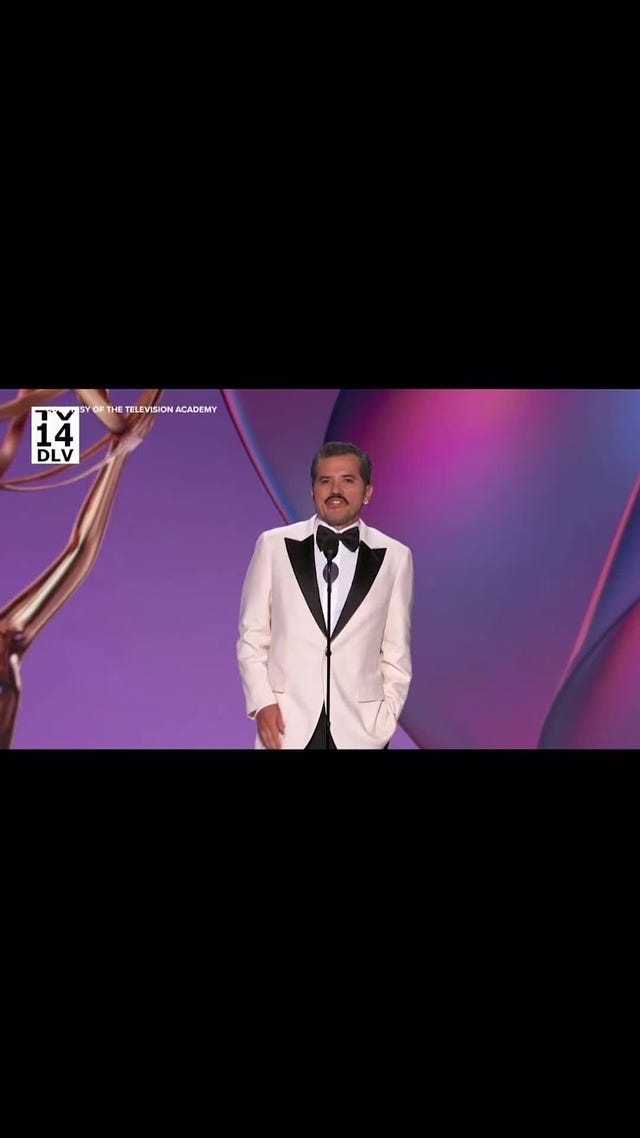John Leguizamo’s Emmys Speech Was A Reminder That Latine Representation In Media Has A Long Way To Go
So, here’s the breakdown–5.5% of TV and film characters are Latine.
Like what you read? Liking posts on Substack, sharing, and subscribing are all much appreciated ways to support the work of Words From My Wits’ End. Talk soon<3
This past Sunday, actor John Leguizamo delivered an impassioned speech at the Emmy Awards about diverse representation, in particular, Latine representation in media. He additionally revealed that this year, Cris Abrego became the first Latin Chairman to preside over the Emmy Awards.
This season, Liza Colon Zayas became the first Latina actress to win an Emmy in the Supporting Actress in a Comedy for her role as Tina Marrero in FX’s “The Bear.” While the win was a historic one for the community, it should not have taken this long. On the comedy front, America Ferrera was the last Latina actress to take home an Emmy for Lead Actress in a comedy in 2007.
A 2023 USC Annenberg study determined that only 5.5% of on screen characters are Latine. Why is it that the Latine community remains one of the most underrepresented groups in American media? Perhaps it is because American writers make little effort to understand them.
Many of the few stories that make it out of the writers room tend to focus on stereotypical narratives like gang violence and immigration stories, which do impact the Latine community, but most certainly do not define it. Zayas’ role as Tina felt especially noteworthy for this reason, as she portrays an ambitious chef charting a new path in life in her 40s.
As Leguizamo put it in his speech, he did not know that acting was an option for him growing up. This statement alone is an illustration of the glaring lack of representation in the media, but also in the writer’s room and beyond. The lack of opportunities for television and filmmakers of color, in particular Latine writers, is part of the problem–as of last year the Hollywood Reporter found that only 6.9% of writers are Latine.

 Tiktok failed to load.
Tiktok failed to load.Enable 3rd party cookies or use another browser
It is largely for this reason that the few opportunities for Latine actors wind up filling stereotypical roles–the toxic latina trope, the machismo man archetype, or general storylines entirely surrounding oppression and struggle. These small percentages make characters like Tina Marrero that much more remarkable.
“Ugly Betty” and “Parks and Rec” are great examples of the lasting impacts of Latine representation done right. Both America Ferrera and Aubrey Plaza, who are Honduran and Puerto Rican respectively, both incorporated their personal heritage into their roles, adding a layer to already complex characters.
Most recently, Jenna Ortega has made a name for herself as a scream queen and cemented herself a symbol in the goth subculture by way of “Wednesday” “Beetlejuice” and the “Scream” franchise, all while celebrating her mixed Latina heritage. Selena Gomez’ Mabel Morra in Hulu’s “Only Murders In The Building” is the most recent example of a complex Latina character whose identity does not revolve around stereotypes.
While unity in Latinidad is important, it is also time for Hollywood to recognize that Latine cultures are not a monolith. Latine people are a mixed ethnic group. Some people from Latin America have Spanish ancestry without Black or indigenous ancestry, making them Hispanic, while others have mixed Spanish, Portuguese, Black and indigenous ancestry, making them Latine. Pew Research Center offers a breakdown of the difference between the terms “Hispanic” and “Latino”, which are entirely different cultures based on regional influence and the diaspora.
Right now, any representation breaks barriers, but is more important than ever for marginalized groups to receive the authentic representation they deserve.



